
How do we construct a triangle equal in area to a given triangle or quadrilateral?
Answer
456k+ views
1 likes
Hint: In this problem, we have to construct a triangle equal in area to a given triangle or quadrilateral. We can construct a triangle equal in area to a given triangle by drawing a line parallel to the base of the triangle and joining the point of the base and the point on the parallel line to get triangles equal in area of the given triangle.
Complete step-by-step solution:
We have to construct a triangle equal in area to a given triangle or quadrilateral.
Let us assume that ABC is a given triangle.
We are to construct a triangle equal in area to this triangle in step by step.
Let us first draw a triangle ABC. Then we will get
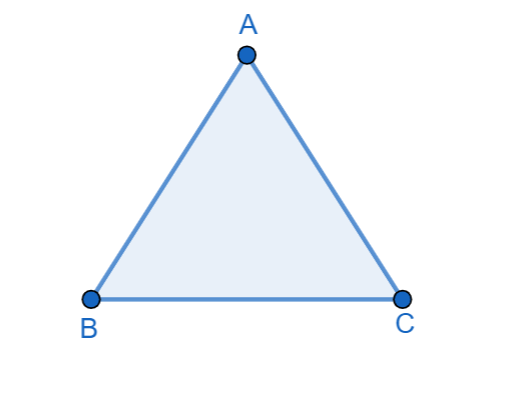
Now, let us draw a line parallel to the base of the triangle BC. For this first let us consider a point A above the base. Now, by taking a suitable radius we will draw an arc with center B which cuts the line segment AB at F and BC at G. Then we will get
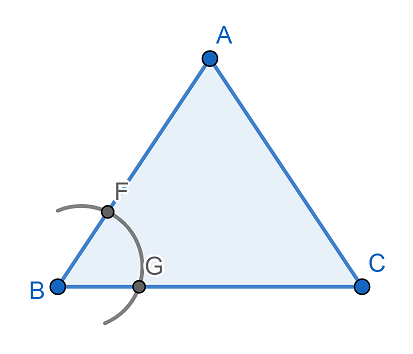
Now, taking the same radius with A as center we will cut the line segment AB at R. Then we will get
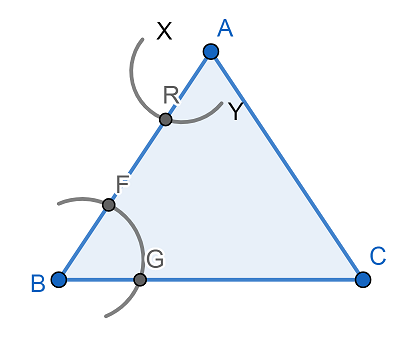
Now, again taking the same radius as previously used we will cut the arc XY at S from the center R. Then we will get
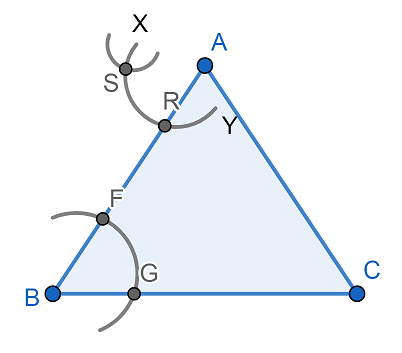
Now, joining the points A and S and drawing a line segment we will get
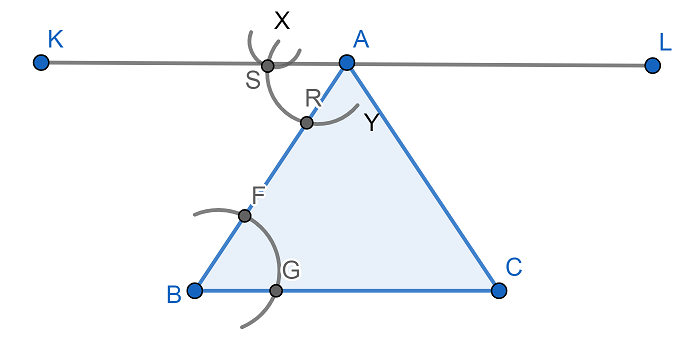
Now, KL is the required line segment parallel to line segment BC.
Now, we can draw points on the line segment KL and join the points with base BC to get the triangle equal in area to the triangle ABC. Then we will get
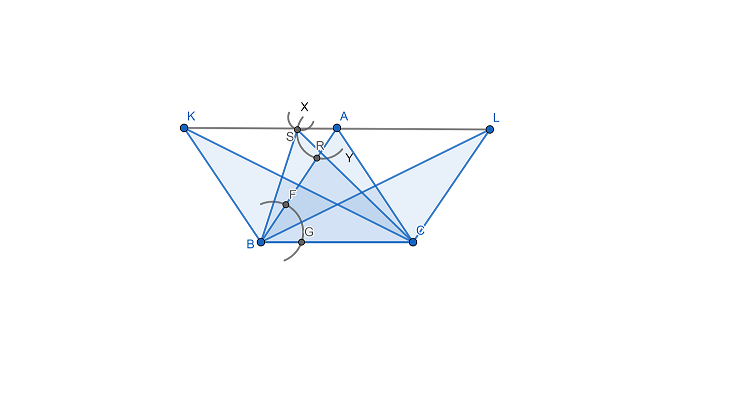
Therefore, we get three triangles
Note: The point to be remembered is that if we place triangles between two parallel straight lines then the area of all triangles with the same base will be equal. Students make mistakes while joining the two points in the base and the point on the parallel line, in which we should concentrate. We can also construct a quadrilateral from the triangle of the same area.
Complete step-by-step solution:
We have to construct a triangle equal in area to a given triangle or quadrilateral.
Let us assume that ABC is a given triangle.
We are to construct a triangle equal in area to this triangle in step by step.
Let us first draw a triangle ABC. Then we will get

Now, let us draw a line parallel to the base of the triangle BC. For this first let us consider a point A above the base. Now, by taking a suitable radius we will draw an arc with center B which cuts the line segment AB at F and BC at G. Then we will get

Now, taking the same radius with A as center we will cut the line segment AB at R. Then we will get

Now, again taking the same radius as previously used we will cut the arc XY at S from the center R. Then we will get

Now, joining the points A and S and drawing a line segment we will get

Now, KL is the required line segment parallel to line segment BC.
Now, we can draw points on the line segment KL and join the points with base BC to get the triangle equal in area to the triangle ABC. Then we will get

Therefore, we get three triangles
Note: The point to be remembered is that if we place triangles between two parallel straight lines then the area of all triangles with the same base will be equal. Students make mistakes while joining the two points in the base and the point on the parallel line, in which we should concentrate. We can also construct a quadrilateral from the triangle of the same area.
Latest Vedantu courses for you
Grade 11 Science PCM | CBSE | SCHOOL | English
CBSE (2025-26)
School Full course for CBSE students
₹41,848 per year
Recently Updated Pages
Master Class 12 Economics: Engaging Questions & Answers for Success

Master Class 12 Maths: Engaging Questions & Answers for Success

Master Class 12 Biology: Engaging Questions & Answers for Success

Master Class 12 Physics: Engaging Questions & Answers for Success

Master Class 4 Maths: Engaging Questions & Answers for Success

Master Class 4 English: Engaging Questions & Answers for Success

Trending doubts
Fill the blanks with the suitable prepositions 1 The class 9 english CBSE

Difference Between Plant Cell and Animal Cell

Given that HCF 306 657 9 find the LCM 306 657 class 9 maths CBSE

The highest mountain peak in India is A Kanchenjunga class 9 social science CBSE

What is the difference between Atleast and Atmost in class 9 maths CBSE

What is pollution? How many types of pollution? Define it




